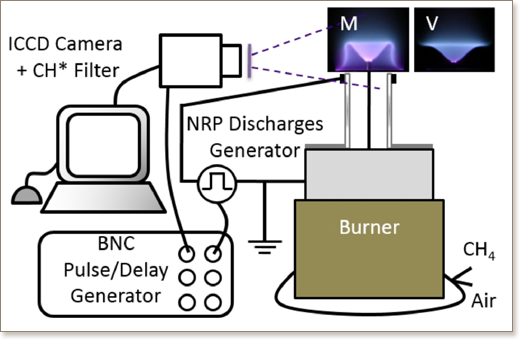


The step responses of lean methane-air flames to non-thermal plasma forcing is reported. The experimental setup consists of an axisymmetric burner, with a nozzle made of a quartz tube. The equivalence ratio is 0.95, allowing stabilization of the flame in a V-shape or an M-shape geometry, over a central stainless steel rod. The plasma is produced by short pulses of 10-ns duration, 8-kV maximum voltage amplitude, applied at 10 kHz. The central rod is used as a cathode, while the anode is a stainless steel ring, fixed on the outer surface of the quartz tube. Plasma forcing is produced by positive or negative steps of plasma. The step response of the flame is investigated through heat release rate (HRR) fluctuations, to facilitate comparisons with flame response to acoustic perturbations. The chemiluminescence of CH* between two consecutive pulses was recorded using an intensified camera equipped with an optical filter to estimate the HRR fluctuations. First, the results show that the flame does not respond to each single plasma pulse, but is affected only by the average plasma power, confirming the step nature of the forcing. The temporal evolutions of HRR are analyzed and the flame transfer functions are determined. A forcing mechanism, as a local increase in the reactivity of the fluid close to the rod, is proposed and compared with numerical simulations. Experiments and numerical simulations are in good qualitative agreement.